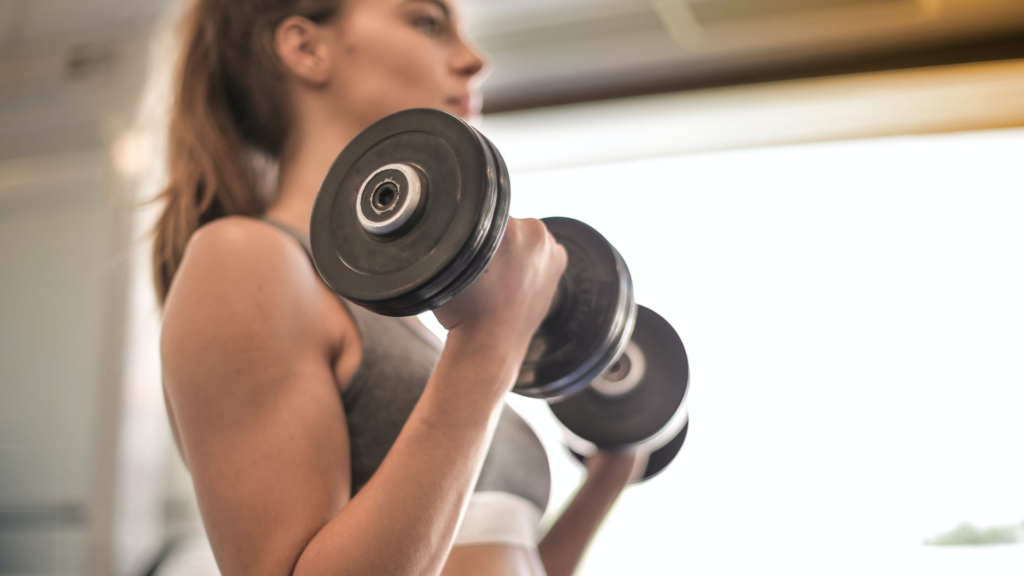
In a workout rut? We’re sharing some of our favorite strategies to stay on track with your goals. Whether you’re a fitness veteran or just beginning to exercise, these strategies can help keep you committed and successful.
1) Create a Workout Plan.
Engaging in any type of physical activity is beneficial for your health but starting every workout with an established plan can help lead you to success and reach your fitness goals. Having a specific purpose each time helps you perform workouts that align with your goals. It’s important to first consult with your physician before starting any new workout plan/exercise routine. After that, establish your goals. Then, study your weekly schedule and identify days/times where your schedule allows time to fit in workouts based on weekly physical activity recommendations.
The Centers for Disease Control and Prevention (CDC) recommends adults engage in at least 150 minutes per week of moderate-intensity physical activity and at least two days of muscle-strengthening activities, which comprise of all major muscle groups (legs, hips, back, abdomen, chest, shoulders and arms).1
Alternating resistance and aerobic workouts may be best to allow complete recovery for major muscle groups. A common practice for implementing muscle-strengthening activities is to follow a training split. Conventional training splits like full body, push-pull, upper-lower body splits, etc. For example, assign Mondays, Wednesdays and Fridays for aerobic exercises; and Tuesdays and Thursdays for resistance training.
2) Warm-Up and Recover.
Rather than jumping straight into a workout, reserve 5-10 minutes for a quick warm-up before exercising. Warm-ups encourage the circulation of oxygenated blood and gradually increases body temperature to “warm up” the muscles. On the flip side, cooling down immediately after a workout promotes a gradual decrease in heart rate and body temperature to normal levels.2
Recovery is often viewed as a method to lessen the soreness from an intense, successful workout. However, proper recovery also entails the return to homeostasis at the cellular level, the stabilization of blood pressure, in addition to the replenishment of energy stores that are depleted during intense physical activity.3
The recovery process begins during exercise itself where adenosine triphosphate (or ATP for short) is resynthesized, intramuscular pH is restored, and blood flow is increased for rapid oxygen delivery.4 Post-exercise recovery consists of normalizing body temperature, blood circulation, ventilation levels and an increase in excess post-exercise oxygen consumption (EPOC).5
Incorporating recovery practices in your weekly workout routine can enhance your overall performance and remedy the effects of physical stress from exercise. Active recovery consists of low-impact exercises like walking or yoga to stimulate blood flow, especially after a strenuous workout. Passive recovery involves no exercise and is also essential for complete recovery.6
3) Strengthen Your Core.
When you think of your “core,” the first thoughts that possibly come to mind are terms like “abs,” “crunches” and “planks.” Our core is in fact a collection of five muscle groups, all of which provide movement, support and stabilization to our spine:
- Rectus abdominis
- Erector spinae
- Internal/external obliques
- Transverse abdominis
- Multifidi
The purpose of strengthening the core is not to attain chiseled abdominals, but rather to achieve and maintain core stability. Most activities we perform depend on core engagement – from squats, deadlifts and jogging to carrying out household chores like vacuuming or doing laundry. It is essential to integrate various core strengthening exercises to target all areas of the core.
4) Stay Hydrated.
Proper hydration is a key factor to ensuring your body performs at an optimal level. Water helps regulate body temperature and maintain homeostasis during physical activity. Adequate hydration before, during and after exercise can help replenish essential nutrients and potentially reduce the risk of dehydration, and poor performance during your workout.
So how much water do you need? The National Academies of Sciences, Engineering, and Medicine suggests men consume 15.5 cups (124 ounces) of fluids per day and women consume 11.5 cups (92 ounces) of fluids per day (including water consumed via fruits and vegetables).7
You can also consider incorporating an electrolyte replacement drink (such as AdvoCare Rehydrate®) to replenish minerals and electrolytes lost through sweat.
5) Find an Accountability Partner.
If you have had difficulty sticking to a workout plan, having an accountability partner may help inspire you to persevere through your workouts. While some people may prefer to work out alone, others may benefit by involving a friend and/or family member in their fitness journey. Adopting this tactic can offer additional support and motivation towards staying on the right path towards accomplishing your goals.
When selecting an accountability partner, look for someone who is optimistic, dedicated and dependable, and with similar fitness goals. Be open and honest about any fears, failures or frustrations during your journey so they can properly lend support when needed. Likewise, share your documented progress with others to celebrate each milestone.
References
1 Centers for Disease Control and Prevention. (2020, October 7). How much physical activity do adults need? Retrieved February 24, 2022, from https://papersowl.com/discover/how-much-physical-activity-do-adults-need
2Mayo Clinic (2018). Aerobic Exercise: How to warm up and cool down. Retrieved February 24, 2022 from: https://www.mayoclinic.org/healthy-lifestyle/fitness/in-depth/exercise/art-20045517
3Jeffreys, I. (2005). A multidimensional approach to enhancing recovery. Strength and Conditioning Journal, 27(5), 78-85.
4 Weiss, L.W. (2008). The obtuse nature of muscular strength: The contribution of rest to its development and expression. Journal of Applied Sports Science Research, 5, 219-227.
5 Borsheim, E & and Bahr, R. (2003). Effect of exercise intensity, duration and mode on post-exercise oxygen consumption. Sports Medicine, 33(14), 1037-1060.
6 Rhea, M.R., Alvar, B.A., Burkett, L.N., & Ball, S.D. (2003). A meta-analysis to determine the dose response for strength development. Medicine and Science in Sports and Exercise, 35(3), 456-464.
7 Mayo Foundation for Medical Education and Research. (2020, October 14). How much water do you
need to stay healthy? Mayo Clinic. Retrieved February 24, 2022, from https://www.mayoclinic.org/healthy-lifestyle/nutrition-and-healthy-eating/in-depth/water/art-20044256




